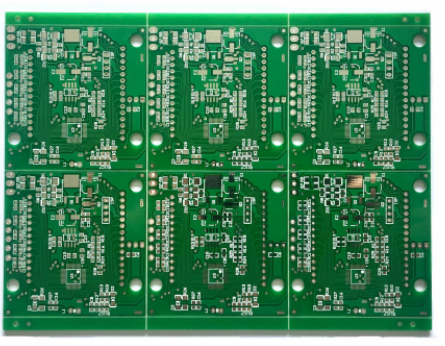The heat generated by the electronic equipment on the printed circuit board causes the internal temperature of the equipment to rise rapidly. If the heat is not dissipated in time, the equipment will continue to heat up, the device will fail due to overheating, and the reliability of the electronic equipment will decrease. Therefore, it is very important to dissipate heat from the circuit board.
1. Analysis of temperature rise factors of printed circuit boards
The direct cause of the temperature rise of the printed board is due to the existence of circuit power consumption devices. Electronic devices all have power consumption to varying degrees, and the heating intensity varies with the size of the power consumption.
Two phenomena of temperature rise in printed boards:

(1) Local temperature rise or large area temperature rise;
(2) Short-term temperature rise or long-term temperature rise.
When analyzing PCB thermal power consumption, it is generally analyzed from the following aspects.
1 Electrical power consumption
(1) Analyze the power consumption per unit area;
(2) Analyze the distribution of power consumption on the PCB circuit board.
2 The structure of the printed board
(1) PCB size;
(2) The material of the printed board.
3 How to install the printed board
(1) Installation method (such as vertical installation, horizontal installation);
(2) The sealing condition and the distance from the casing.
4 thermal radiation
(1) The emissivity of the printed board surface;
(2) The temperature difference between the printed board and adjacent surfaces and their absolute temperature;
5 heat conduction
(1) Install the radiator;
(2) Conduction of other installation structural parts.
6 thermal convection
(1) Natural convection;
(2) Forced cooling convection.
The analysis of the above factors from the PCB is an effective way to solve the temperature rise of the printed board. These factors are often related and dependent on each other in a product and system. Most of the factors should be analyzed according to the actual situation, and only for a specific The actual situation can calculate or estimate the parameters such as temperature rise and power consumption more correctly.
2. PCB Circuit board heat dissipation method
1 High heat-generating components plus radiator and thermal board
When a small number of components in the PCB generate a large amount of heat (less than 3), a heat sink or heat pipe can be added to the heating device. When the temperature cannot be lowered, a heat sink with a fan can be used to enhance heat dissipation Effect. When the number of heating devices is large (more than 3), a large heat dissipation cover (board) can be used, which is a special heat sink customized according to the position and height of the heating device on the PCB or a large flat heat sink Cut out different component height positions. The heat dissipation cover is integrally buckled on the surface of the component, and it is in contact with each component to dissipate heat. However, the heat dissipation effect is not good due to the poor consistency of height during assembly and welding of components. Usually, a soft thermal phase change thermal pad is added on the surface of the component to improve the heat dissipation effect.